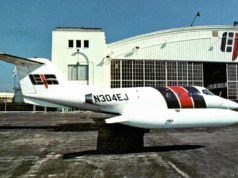Some 40 years ago, I was told that flight crews in the future will be comprised of a pilot and a dog. The pilot will be there to feed the dog, and the dog there to bite the pilot in case he or she tries to touch anything. It was funny then; now, it appears prescient.
Drones, or Unmanned Aerial Vehicles (UAVs) — also known as Remote Piloted Vehicles (RPAs) by the International Civil Aviation Organization (ICAO) — have been in military use for those 40 years, for reconnaissance as well as for combat.
But UAVs for commercial use — that’s something new, and a hotly debated issue. Current U.S. regulations restrict remote-control commercial UAVs’ size to 55 pounds, and flight operations to below 400 feet, quite sufficient for aerial filming or to monitor remote farmland or facilities.
The concern is one of training and regulation: will commercial UAVs stay below 400 feet? What is the potential to interfere with low-flying manned aircraft, perhaps carrying passengers? And what is their future?
In September, the FAA approved the use of UAVs for commercial purposes as per an exemption provided by the 2012 FAA Modernization and Reform Act, Section 333. More than 50 companies already have applied for these exemptions, for aerial mapping, facilities monitoring, and movie production. As of this writing, 13 have been approved for limited operations for crop surveying and movie production, thanks to some heavy lobbying by Hollywood. FedEx, Amazon, and UPS have added their voices to that lobby, looking to use UAVs for small package delivery.
That lobbying is about increase, by a very different group: the U.S. Congress. The Association for Unmanned Vehicle Systems International (AUVSI) forecasts that drone use will create 100,000 jobs and $82 billion in economic impact in the first 10 years after approval. Those are numbers no self-respecting legislator seeking reelection can ignore.
How large a leap is it from photo missions and package delivery to UAV passenger transportation? Nicholas Carr’s 2014 book The Glass Cage examines the accelerating expansion of automation into modern life. The chapter “On Autopilot” traces the impact of the resulting changes on today’s pilots’ “stick-and-rudder” skills. As automation assumes more control of routine flight activities, the pilot’s challenge becomes one of maintaining those critical skills. That makes twice-yearly recurrent training sessions in Level-D full-flight simulators mandatory to insure optimal operational safety.
While pilotless passenger aircraft may still be years away, aviation automation remains on a fast track. As Nancy Risso writes in this issue (“NextGen — Why?” p. 10), jet owners are required to install Automatic Dependent Surveillance — Broadcast Business (ADS-B) equipment by 2020.
And by then, a very different group of lads and lassies may be staffing our aircraft. BAA
Publisher of Business Aviation Advisor, has nearly 50 years in business aviation including executive positions at aircraft management/charter and ground services companies. He is a past director of the NATA and Corporate Angel Network.





